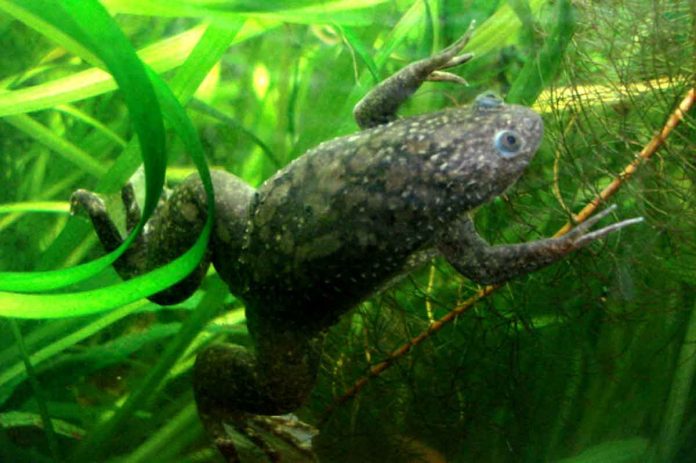Millions of patients have lost limbs for reasons like diabetes to trauma. But regaining function through natural regeneration is not possible. A study has been published in the journal Science Advances. There Tufts University and Harvard University’s Wyss Institute scientists have brought us closer to the goal of regenerative medicine.
Adult frogs are naturally unable to regenerate limbs. Scientists triggered regrowth of a lost leg by using a five-drug cocktail applied in a silicone wearable bioreactor dome that seals in the elixir over the stump for 24 hours. This treatment sets in motion an 18-month period of regrowth a functional leg.
Some creatures have the capability of full regeneration of some limbs. Creatures such as salamanders, starfish, crabs, and lizards. Flatworms can be cut up into pieces and each piece can reconstruct an entire organism. Humans are capable of closing wounds with new tissue growth. Our livers have a flatworm-like capability of regenerating to full size after a 50% loss.
But loss of a large and complex limb like an arm or leg cannot be restored. It cannot be restored by any natural process of regeneration in humans or mammals. We can cover major injuries with an amorphous mass of scar tissue. This protects it from further blood loss and infection. It also prevents further growth.
Kickstarting regeneration
Scientists triggered the regenerative process in African clawed frogs. They enclosed the wound in a silicone cap. Scientists call it BioDome. This contains a silk protein gel loaded with the five-drug cocktail.
Each drug has a different purpose. It includes tamping down inflammation. It inhabits the production of collagen that would lead to scarring. It will encourage the new growth of nerve fibers, blood vessels and muscle. The combination will provide a local environment. It will signal the scales away from the natural tendency to close off the stump.
Scientists observed growth of tissue in many of the treated frogs. It re-created an almost fully functional leg. The new limbs had bone structure extended with features. These features are similar to a natural limb’s bone structure. This is a richer complement of internal tissues. Several “toes” grew from the end of the limb.
The regrown limb moved to stimuli such as a touch from a stiff fiber. The frogs were able to make use of it for swimming through water.
Scientists explored the mechanisms by which the brief intervention could lead to long-term growth. Scientists detected he activation of known molecular pathways, within the first few days after treatment. These are normally used in a developing embryo to help the body take shape.
This can allow the burden of growth and organization of tissue to be handled by the limb itself. This is similar to how it occurs in an embryo.

